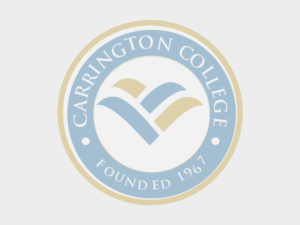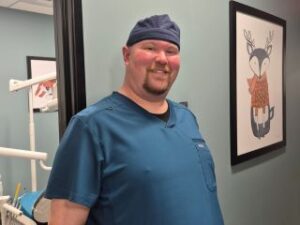 Those in medical assisting programs may be interested in a recent gene therapy trial that potentially could benefit those with X-linked severe combined immunodeficiency, (usually shortened to SCID-X1), an inherited disorder of the immune system. The trial, published in the New England Journal of Medicine, found eight out of nine children enrolled in gene therapy are still alive after treatment.1 Furthermore, none of the eight surviving children had developed leukemia, which had been an issue with previous gene therapy trials. Though further testing needs to be conducted, this research is promising considering that SCID-X1 is often fatal within the first two years.
Those in medical assisting programs may be interested in a recent gene therapy trial that potentially could benefit those with X-linked severe combined immunodeficiency, (usually shortened to SCID-X1), an inherited disorder of the immune system. The trial, published in the New England Journal of Medicine, found eight out of nine children enrolled in gene therapy are still alive after treatment.1 Furthermore, none of the eight surviving children had developed leukemia, which had been an issue with previous gene therapy trials. Though further testing needs to be conducted, this research is promising considering that SCID-X1 is often fatal within the first two years.
What is SCID-X1?
Sometimes referred to as X-linked SCID, this condition is rare and primarily affects boys. Patients with SCID-X1 are prone to opportunistic infections caused by bacteria, viruses and fungi that would not normally cause symptoms in healthy people.3 Though SCID-X1 only affects an estimated 1 in 50,000 to 100,000 people, it is the most common form of severe immunodeficiency, according to the National Institutes of Health.3 The gene associated with the inheritance of this condition is located in the X chromosome, which is why it is referred to as X-linked. For women to inherit the condition, both X chromosomes would have to be affected. Since men only have one X chromosome, the condition is much more common in males. The Wall Street Journal notes one of the most famous cases of SCID-X1 involved a boy living in a germ-free bubble, hence the agnomen “bubble boy syndrome.”4 Without treatment most children die by age two. Current treatment primarily consists of stem-cell transplants from bone marrow.
Gene therapy
The recent study has attracted much attention because the medical industry is finding commercial uses and seeking regulatory support, according to The Wall Street Journal.4 The trial was conducted in patients across the U.S. and Europe. In the past, gene therapy has been somewhat controversial due to mixed results and some deaths. The basic concept behind gene therapy is to correct a defective or nonfunctioning gene so that it functions normally. Regarding SCID-X1, the malfunctioning gene prevents the development of T-cells, which are crucial in fighting off infections.2 Scientists deliver a normal gene through a vector, which restores the normal gene and hence cures the condition. In a previous research, the vector used by scientists worked in curing SCID-X1, but five of 20 patients developed leukemia.4 After the trial, scientists suspected that the vector they had used contributed to cell growth, causing the leukemia. A new vector was then developed and used for the most recent trial. In this trial, researchers found that eight of the nine patients survived, and the one who died was experiencing an infection prior to the trial’s commencement.1 While it is too early to predict if leukemia will become onset in the long term, scientists remain optimistic about the potential for the new vector. Of the nine patients, seven developed functioning T-cells and have survived without showing symptoms of leukemia. The other survivor had to undergo a stem cell transplant because T-cells did not develop.1 Each patient is expected to be monitored for leukemia for a 15-year duration and researchers intend to continue enrolling more boys with SCID-X1 in the trial.4 On a broader scale, gene therapy is a relatively new medical treatment concept and the potential uses are still in the clinical trial phase. Someday, gene therapy could potentially be a major part of modern medicine, and has possible implications across a wide range of health care professions. 1 “A Modified γ-Retrovirus Vector for X-Linked Severe Combined Immunodeficiency,” by Salima Hacein-Bey-Abina, Pharm.D., Ph.D., Sung-Yun Pai, M.D., H. Bobby Gaspar, M.R.C.P., et al., The New England Journal of Medicine, October 9, 2014. http://www.nejm.org/doi/full/10.1056/NEJMoa1404588?query=featured_home 2 “X-linked severe combined immunodeficiency,” National Institutes of Health. http://ghr.nlm.nih.gov/condition/x-linked-severe-combined-immunodeficiency 3 “Gene therapy shows promise for severe combined immunodeficiency,” Science Codex, October 8, 2014. http://www.sciencecodex.com/gene_therapy_shows_promise_for_severe_combined_immunodeficiency-143189 4“Gene-Therapy Trial for ‘Bubble Boy Syndrome’ Shows Promise,” by Amy Dockser Marcus, The Wall Street Journal, October 8, 2014. http://online.wsj.com/articles/gene-therapy-trial-for-bubble-boy-syndrome-shows-promise-1412802002



